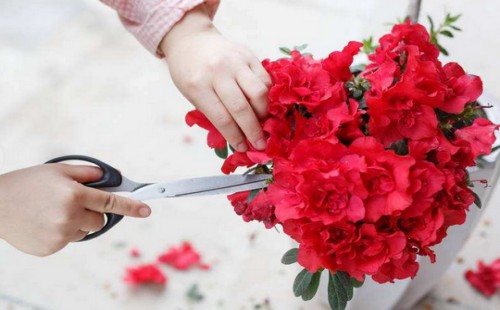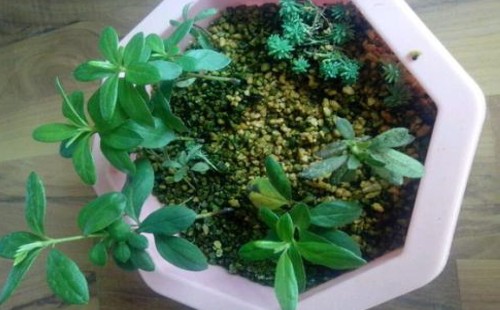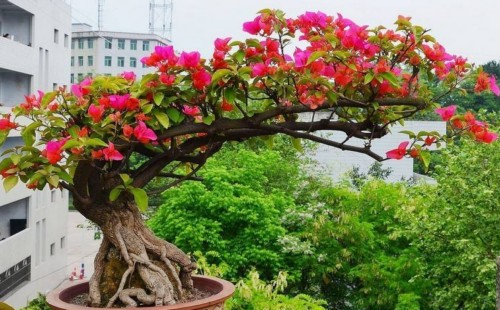How to shape the rhododendron bonsai
When using pruning methods, we can combine artificial modeling with rhododendron bonsai. We can do it according to personal preferences and design intentions, but the most basic principle is not to cause excessive damage to the plant, affecting the normal growth of the plant. So, how to shape the rhododendron bonsai?

There are many modeling methods of rhododendron bonsai, but the pruning means are used most frequently, and it is more convenient to shape a beautiful body. The most common modeling effect can be trimmed into umbrella shape and pagoda shape. Next, let's take a brief look at these two styling designs.
1. Umbrella shape
To create this plant type effect, mainly let the lower part of the rhododendron bonsai tree sprout more side branches, and then through reasonable pruning, so that the branches are more evenly distributed on the branches. Sometimes, in order to achieve a certain modeling effect and aesthetic effect, we also need to bind and stretch with the help of rope. When the azaleas bloom, their flowers will form a large flower ball, which looks very magnificent, thus achieving the purpose of our modeling.
Technical points: keep the main rod about 10 centimeters, by removing the top growth point, let the plant grow into a state without a central rod, which can promote the germination of a large number of lateral branches and make the plant more plump and round. But the side branches germinated for the first time can retain 4-5 as main branches, and then gradually sprout more side branches by topping at an appropriate time, so that they can be evenly distributed and extended around. Usually the upper branches need to be plucked many times, and the lower branches can be retained properly. In this way, it can be made into an umbrella-shaped plant effect.
Second, pagoda shape
If you want to create a pagoda-shaped rhododendron bonsai, the pruning work needs to be carried out timely according to the tree situation, and the original needs to be pruned in time from the fixed drying period. Similarly, we need to reshape the branches at the bottom or bottom, and then prune them up layer by layer until the whole plant type is finally trimmed into a pagoda.
Technical points: when the main rod grows to 10 cm in length, it will not be coring or topping, so that it can only extend out of the center rod. Next, let the center rod retain 2-4 layers of main branches, and need to take timely and reasonable pruning measures to shape every year. The main purpose is to control the extension range of the upper branches, cultivate the distribution of the lower branches, and properly control them step by step, so that the bonsai trees can be shaped into pagoda-shaped plants over a long time.
In addition to the above two mainstream modeling effects, it can also be made into hydrangea type, cantilever type, leaning branch type, Panlong type and other shapes. Here, the editor will not repeat them one by one. However, it should be noted that pruning methods need to be used reasonably during basin change, usually cutting off dense branches, cross branches, overlapping branches, transverse branches, disease and insect branches, over-long slender roots, old and weak roots. At the same time, in order to shape, it is usually necessary to timely and flexibly use a variety of means in the growing period of rhododendron, such as sprouting, de-sprouting, bud removal, heart removal and residual flower removal.
Time: 2019-06-07 Click:
- Prev

When and how to cuttage azaleas
In landscaping and landscape engineering, rhododendron has been more and more widely used, and the market demand is increasing in recent years. Therefore, for the breeding of rhododendron seedlings, it is particularly important to improve the production efficiency by improving methods. There are many ways to reproduce azaleas.
- Next

Triangular plum bonsai for several months
There are many styles of triangular plum bonsai, but for adult trees, pruning is often used in modeling methods, followed by Panzha. However, for young triangulated plum trees, in order to shape at the beginning of the period, they usually take the way of flat binding to shape. Through the rational use of flat binding means
Related
- Fuxing push coffee new agricultural production and marketing class: lack of small-scale processing plants
- Jujube rice field leisure farm deep ploughing Yilan for five years to create a space for organic food and play
- Nongyu Farm-A trial of organic papaya for brave women with advanced technology
- Four points for attention in the prevention and control of diseases and insect pests of edible fungi
- How to add nutrient solution to Edible Fungi
- Is there any good way to control edible fungus mites?
- Open Inoculation Technology of Edible Fungi
- Is there any clever way to use fertilizer for edible fungus in winter?
- What agents are used to kill the pathogens of edible fungi in the mushroom shed?
- Rapid drying of Edible Fungi

